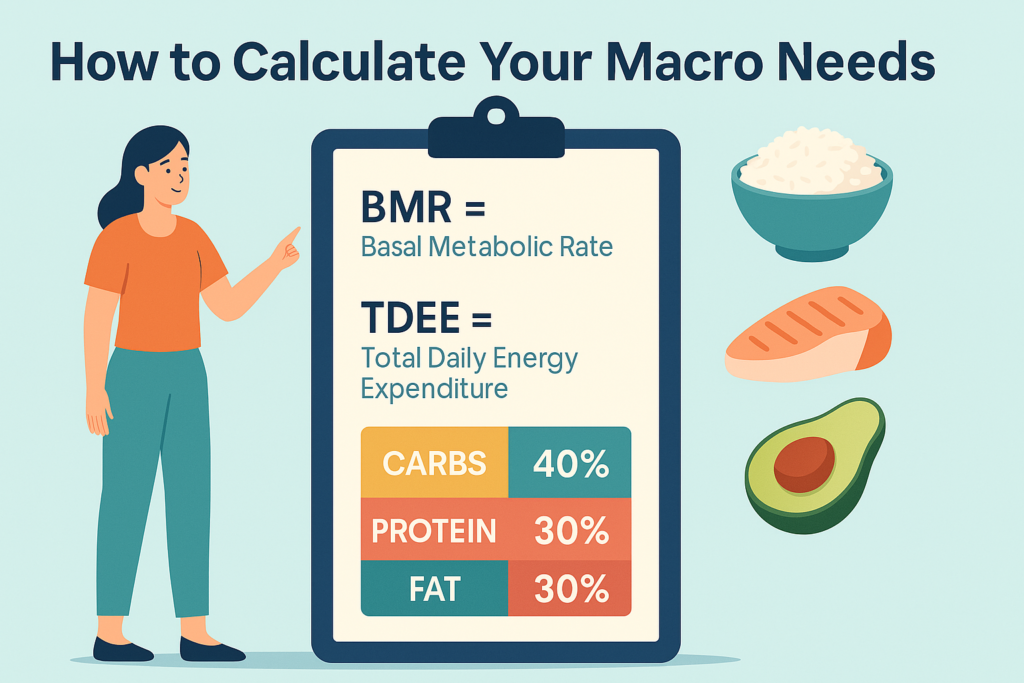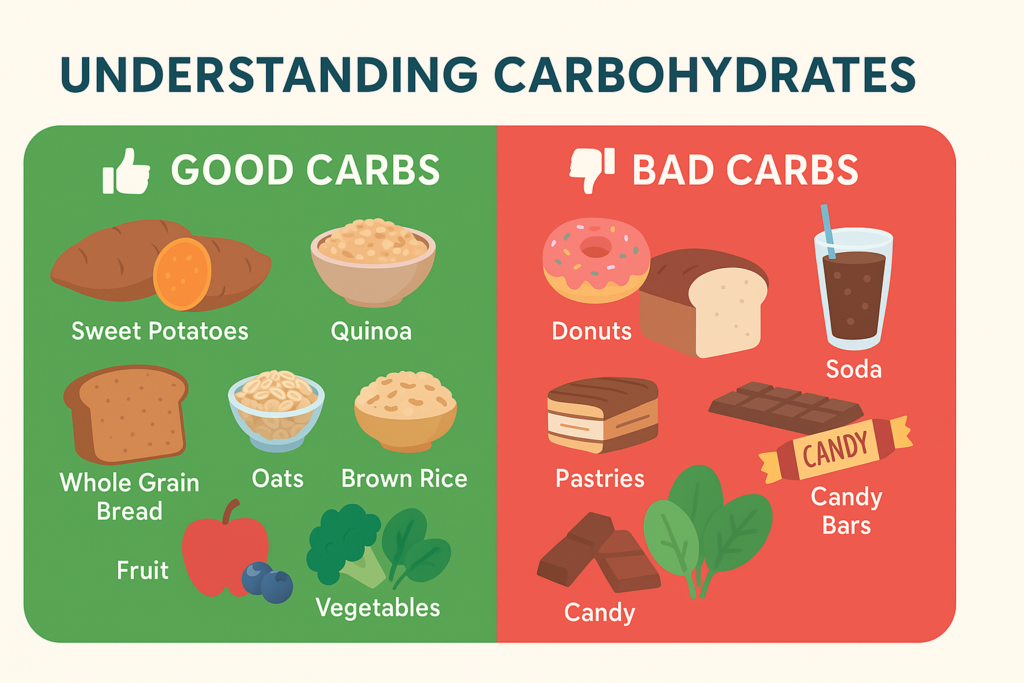Introduction
In today’s health-conscious world, achieving optimal health goes beyond simply counting calories. Instead, understanding and balancing macronutrients—proteins, fats, and carbohydrates—can have a profound impact on your physical well-being, energy levels, and even mental clarity. Many people struggle with fatigue, poor digestion, or unexplained weight gain despite maintaining a “healthy diet.” Often, the problem lies in an imbalance of macros rather than the total calorie intake.
Balancing your macros effectively can help you reach a variety of health goals—from fat loss and muscle gain to improved metabolic function and long-term wellness. In this article, you’ll discover what macronutrients are, why they matter, and how to calculate and adjust your ideal macro ratios based on your personal needs and goals. Let’s dive into the essentials of mastering your macros for optimal health.
What Are Macronutrients and Why They Matter
Understanding the Three Main Macros
Macronutrients are nutrients that your body needs in large quantities to function properly. They are the building blocks of your diet:
- Proteins: Essential for muscle repair, immune function, and the production of enzymes and hormones.
- Carbohydrates: The body’s preferred energy source, especially for your brain and muscles.
- Fats: Crucial for hormone production, cellular health, and long-lasting energy.
Each macro plays a distinct role in your health, and balancing them correctly ensures your body functions optimally.
Caloric Values and Energy Conversion
Each macronutrient provides a specific amount of energy:
- Protein: 4 calories per gram
- Carbohydrates: 4 calories per gram
- Fats: 9 calories per gram
This means fat is more energy-dense than the others, making it important to monitor its intake carefully.
How to Calculate Your Macro Needs

Step 1: Determine Your Daily Caloric Needs
Start by calculating your Total Daily Energy Expenditure (TDEE). This is the number of calories you burn in a day and depends on your Basal Metabolic Rate (BMR) and activity level. You can use online calculators or the Mifflin-St Jeor Equation:
For men: (10 × weight in kg) + (6.25 × height in cm) – (5 × age) + 5
For women: (10 × weight in kg) + (6.25 × height in cm) – (5 × age) – 161
Multiply your BMR by your activity level:
- Sedentary: BMR × 1.2
- Lightly active: BMR × 1.375
- Moderately active: BMR × 1.55
- Very active: BMR × 1.725
- Extremely active: BMR × 1.9
Step 2: Set Your Macro Ratios Based on Goals
Different goals require different macro splits:
- Fat Loss: 40% protein, 30% fat, 30% carbs
- Muscle Gain: 30% protein, 25% fat, 45% carbs
- Maintenance: 30% protein, 30% fat, 40% carbs
Multiply your TDEE by each percentage to determine how many calories should come from each macro, then divide by their caloric value to get grams.
Example:
For a 2,000-calorie goal:
- Protein (30%) = 600 calories = 150 grams
- Fat (30%) = 600 calories = 66 grams
- Carbs (40%) = 800 calories = 200 grams
Macro Tracking: Tools and Techniques
Use Technology to Your Advantage
Apps like MyFitnessPal, Cronometer, and Lose It! make tracking macros simple. They provide databases of food items, barcode scanning, and macro summaries per meal.
Weigh Your Food for Precision
Use a digital kitchen scale to weigh ingredients instead of guessing. It provides much more accurate results, especially with calorie-dense foods like nuts or oils.
Meal Planning and Prep
Prepare your meals in advance with your macros in mind. Batch cooking and pre-portioning meals helps ensure you stay within your macro limits.
Read Nutrition Labels Carefully
Look beyond just calories. Focus on the protein, carb, and fat content of each food and compare serving sizes.
The Role of Protein in Optimal Health
Benefits of Adequate Protein Intake
Protein is essential for:
- Muscle growth and repair
- Enzyme and hormone production
- Satiety and appetite control
High-Quality Protein Sources
- Animal-based: chicken breast, turkey, lean beef, fish, eggs, dairy
- Plant-based: tofu, tempeh, lentils, quinoa, chickpeas, edamame
How Much Protein Do You Need?
- For sedentary adults: 0.8 g per kg of body weight
- For active individuals: 1.2–2.2 g per kg
Example: An 80kg active person might need up to 160g of protein daily.
Understanding Carbohydrates: Friend or Foe?

Types of Carbohydrates
- Simple Carbs: Sugars found in fruits, milk, and processed snacks. Quick energy but short-lived.
- Complex Carbs: Found in whole grains, legumes, and vegetables. Provide sustained energy.
Carbs and Exercise Performance
Carbohydrates fuel workouts and replenish glycogen stores in muscles. Low-carb diets can impair performance, especially in high-intensity training.
Best Carbohydrate Sources
- Whole oats, brown rice, sweet potatoes, quinoa
- Vegetables like broccoli, spinach, and carrots
- Fruits such as berries, apples, bananas
Fats: The Essential Macro That’s Often Misunderstood
Good vs. Bad Fats
- Healthy Fats: Monounsaturated and polyunsaturated fats (avocados, nuts, seeds, olive oil)
- Unhealthy Fats: Trans fats and excessive saturated fats (processed snacks, fried foods)
Importance of Healthy Fats
- Hormonal balance
- Brain function
- Fat-soluble vitamin absorption (A, D, E, K)
Ideal Fat Intake and Timing
Spread fat intake evenly throughout the day. Avoid consuming high-fat meals immediately before intense exercise.
Advanced Tips to Optimize Your Macro Balance
Adjusting Macros Over Time
Your macro needs will change with your body composition and goals. Recalculate your TDEE and macros every 4–6 weeks.
Nutrient Timing
Time your carbs around workouts for better energy and recovery. High-protein meals post-workout aid muscle repair.
Incorporate Fiber
Aim for 25–30g of fiber daily to support digestion and promote satiety. Fiber also helps regulate blood sugar levels.
Hydration Matters
Water helps transport nutrients and supports metabolic function. Aim for 2–3 liters per day depending on activity.
Real-Life Sample Meal Plan (2,000 Calories)
Breakfast:
- 2 eggs + 1 slice whole-grain toast + ½ avocado
- 1 banana
Macros: 23g protein, 28g fat, 35g carbs
Lunch:
- Grilled chicken breast + quinoa + mixed greens salad with olive oil
- 1 apple
Macros: 40g protein, 20g fat, 45g carbs
Snack:
- Greek yogurt + almonds
Macros: 20g protein, 12g fat, 10g carbs
Dinner:
- Baked salmon + sweet potato + steamed broccoli
Macros: 40g protein, 15g fat, 40g carbs
Evening Snack:
- Protein shake with almond milk
Macros: 25g protein, 10g fat, 15g carbs
Conclusion
Balancing your macros isn’t a one-size-fits-all formula—it’s a personalized strategy to fuel your body effectively and reach your specific health goals. Understanding how proteins, fats, and carbs function in your body empowers you to make informed decisions about your diet. Whether your aim is to lose fat, build muscle, or simply feel your best, mastering macro balance can be a game-changer. Revisit your goals frequently, track your progress, and don’t be afraid to make adjustments along the way. With the right knowledge and consistent application, you’ll find that balancing your macros is one of the most sustainable and effective ways to achieve optimal health.
Main Takeaways (Bullet Points)
- Macronutrients include protein, fats, and carbohydrates, each serving unique roles in the body.
- Calculating your TDEE and setting macro ratios based on your goals is essential.
- Protein supports muscle repair, satiety, and overall health.
- Carbs provide energy, especially for workouts, and should be primarily complex sources.
- Healthy fats support hormones and cognitive function—don’t avoid them.
- Tracking, meal planning, and mindful eating are key to long-term success.
- Your macro needs will evolve over time; stay flexible and reassess regularly.








One Response